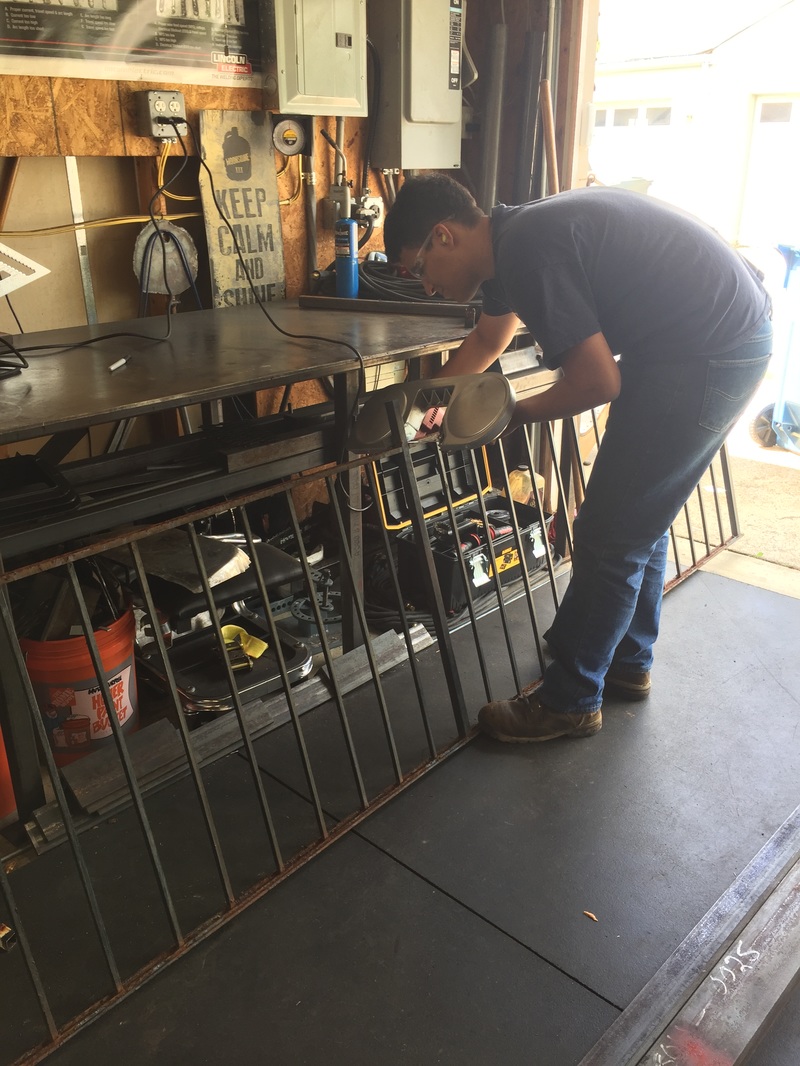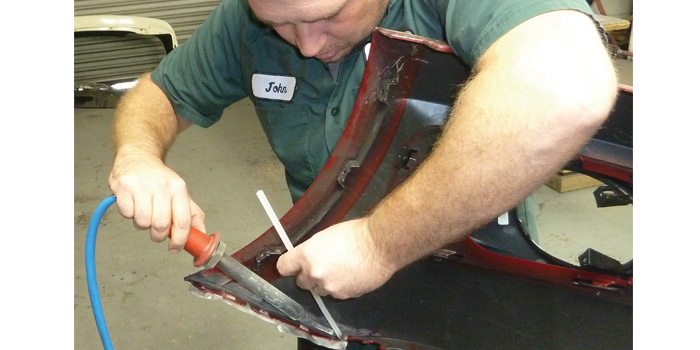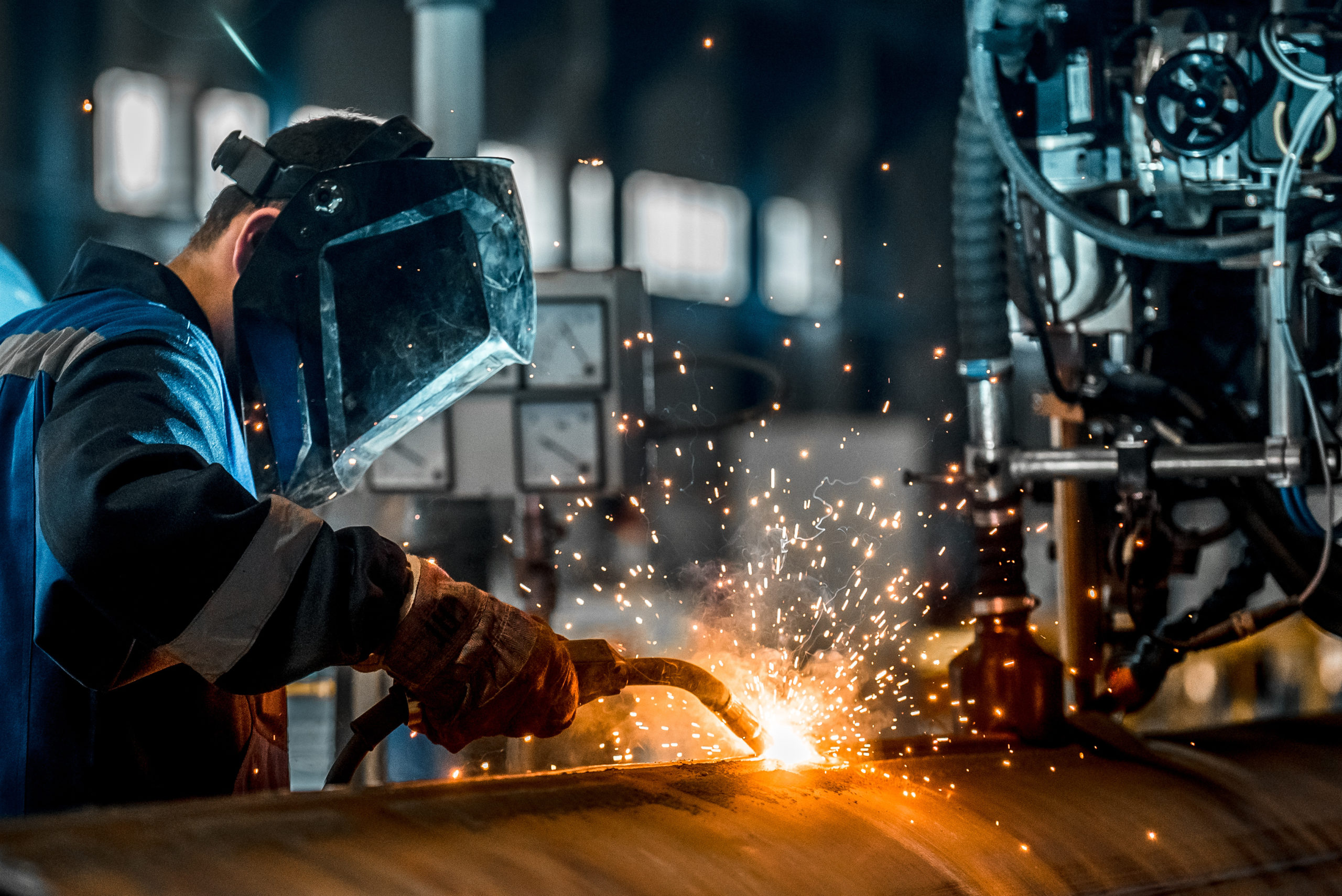Usual Welding Repair Work Issues and Exactly How to Address Them Properly
Welding fixings usually run into a range of issues that can endanger the honesty of the end product. Usual problems include inadequate infiltration, porosity, and imbalance, amongst others. Each problem presents special obstacles that need particular methods for resolution. Recognizing these concerns is important for welders intending to enhance their skills and end results. This discussion will check out these common welding repair work issues and reliable approaches to address them.
Inadequate Infiltration
Inadequate infiltration occurs when the weld metal stops working to totally fuse with the base material, resulting in weak joints and prospective structural failings. This issue frequently originates from inadequate warmth input, inaccurate electrode angle, or inappropriate welding rate. Welders may encounter inadequate infiltration because of a miscalculation of the required criteria for a specific product thickness or type. In addition, contamination on the base material's surface area can prevent effective bonding, exacerbating the problem. To deal with insufficient penetration, welders need to ensure appropriate settings on their equipment and preserve a clean job surface area. Routine evaluation of welds is recommended to determine any deficiencies early, allowing for timely improvements and the prevention of jeopardized architectural stability in bonded settings up.
Porosity
Porosity is a typical flaw in welded joints that manifests as little gas bubbles caught within the weld steel. This flaw can compromise the honesty of the weld, bring about lowered stamina and potential failing under stress and anxiety. Belgrade Fabrication. Porosity generally develops from contamination, dampness, or improper welding methods, which allow gases to get away into the molten weld pool. To deal with porosity, welders should guarantee appropriate surface area preparation, preserve a tidy workplace, and utilize appropriate welding criteria. Furthermore, choosing the appropriate filler material and securing gas can mitigate gas entrapment. Regular assessment and screening of welds can help recognize porosity early, ensuring prompt restorative actions are taken, thus maintaining the top quality and reliability of the bonded structure
Imbalance
Misalignment in welding can arise from numerous factors, including incorrect arrangement and thermal growth. Understanding the source is necessary for efficient resolution. A number of correction methods are offered to realign parts and ensure architectural integrity.
Root causes of Misalignment
Welding misalignment typically originates from a selection of underlying concerns that can compromise architectural integrity. One primary reason is improper fit-up of components before welding, which can result in spaces and uneven surface areas. Variants in thermal development throughout the welding process can additionally lead to distortion, especially if the materials being joined have various coefficients of development. Furthermore, insufficient securing and fixturing may stop working to hold elements safely in place, bring about motion during welding. Badly kept equipment, including welding equipments and tools, may present incongruities in the weld grain, more adding to imbalance. Driver error, stemming from insufficient training or experience, can likewise play a considerable role in producing misaligned welds.

Improvement Techniques Offered
Dealing with imbalance efficiently needs a combination of corrective strategies tailored to the particular problems handy. One common technique is making use of components or jigs to hold components in the correct placement during welding, ensuring constant alignment. Furthermore, preheating the products can aid decrease distortion and enhance fit-up. For considerable misalignment, mechanical adjustment strategies, such as making use of hydraulic jacks or clamps, can be utilized to fix the placement before welding. Post-weld warmth treatment may additionally be needed to relieve stresses triggered by imbalance. Ultimately, cautious evaluation and change throughout the arrangement stage can stop imbalance problems from becoming significant problems, advertising a smoother welding procedure and improving overall architectural stability.
Distortion
Distortion is a common obstacle in welding that can arise from various factors, consisting of unequal cooling and heating. Comprehending the reasons of distortion is important for executing reliable prevention methods. Addressing this concern not only improves architectural stability however also improves the overall top quality of the weld.
Root causes of Distortion
When subjected to the extreme warm of welding, materials usually undergo adjustments that can lead to distortion. This phenomenon largely emerges from thermal growth and contraction throughout the welding process. As the weld area heats up, the material expands; upon cooling, it contracts, which can produce internal anxieties. In enhancement, unequal home heating across a work surface can exacerbate these stress and anxieties, leading to warping or flexing. The sort of material additionally plays a considerable function; steels with differing thermal conductivity and coefficients of development might react differently, bring about unpredictable distortions. Inadequate joint style and poor fixturing can contribute to imbalance throughout welding, raising the possibility of distortion. Recognizing these reasons is essential for effective welding fixing and avoidance methods.
Prevention Techniques
Reliable avoidance methods for distortion throughout welding concentrate on controlling heat input and making certain appropriate joint style. Keeping a consistent warmth input assists to decrease thermal expansion and tightening, which can result in distortion. Utilizing strategies such as pre-heating the work surface can also reduce the temperature slope, advertising uniform heating. In addition, picking suitable joint designs, such as T-joints or lap joints, can improve security and lower stress concentrations. Executing correct fixturing to safeguard the work surfaces in area additionally aids in preserving placement throughout the welding procedure. Staggered welding sequences can distribute check this site out warmth more uniformly, avoiding localized distortion. By applying these approaches, welders can considerably lower the chance of distortion and boost the general high quality of their welds.
Cracking
Breaking is a common issue come across in welding fixings, commonly resulting from different variables such as inappropriate cooling prices, material choice, or poor joint prep work. The incident of fractures can considerably endanger the honesty of the weld, causing prospective failings throughout procedure. To resolve this concern, welders must first evaluate the origin causes, ensuring that materials work and suitably chosen for the details application. Furthermore, regulating the cooling rate during the welding process is essential; fast cooling can generate stress and anxiety and lead to see this website cracking. Correct joint design and prep work likewise add to reducing the threat. Implementing these strategies can enhance weld quality and longevity, eventually reducing the probability of cracking in ended up weldments.

Incomplete Blend
A substantial issue in welding repair work is incomplete blend, which takes place when the weld steel does not appropriately bond with the base product or previous weld passes - Montana Mobile Welding and Repair. This problem can cause weak points in the joint, potentially jeopardizing the integrity of the welded structure. Factors contributing to incomplete combination consist of not enough heat input, incorrect welding technique, and contamination of the surfaces being joined. To address this problem successfully, welders must guarantee appropriate pre-weld cleaning and surface preparation, in addition to change their welding specifications to attain adequate penetration and combination. Normal inspection throughout the welding procedure can additionally aid recognize insufficient fusion early, permitting prompt corrective actions to boost the total top quality of the weld
Overheating
While welding fixings can boost architectural stability, overheating presents a significant challenge that can cause material destruction. Too much heat during welding can change the mechanical residential properties of metals, resulting in decreased toughness, raised brittleness, and warping. This sensation is specifically important in high-stress applications where structural integrity is vital. Recognizing getting too hot can involve aesthetic inspections for discoloration or distortion, in addition to keeping track of temperature during the welding process. To minimize the dangers connected with overheating, welders ought to use suitable techniques, such as controlling warm input, readjusting traveling speed, and utilizing ideal filler materials. In addition, executing pre- and post-weld warm treatments can aid restore product homes and enhance the overall high quality of the repair, ensuring long-term performance and security.
Often Asked Inquiries
What Are the Typical Indicators of a Welding Problem?

Just How Can I Check My Welds for High quality?
To evaluate welds for quality, one can utilize aesthetic assessments, ultrasonic screening, and radiographic methods. Each method assures structural honesty, identifies flaws, and validates adherence to specified standards, eventually improving the dependability of the bonded joints.
What Safety and security Safety Measures Should I Take While Welding?
When welding, one ought to focus on safety by wearing proper individual safety tools, making sure appropriate air flow, securing combustible products away, preserving a clean work space, and being aware of environments to stop accidents and injuries.
Can I Repair a Weld Without Renovating the Entire Joint?
Repairing a weld without renovating the whole joint is feasible, depending on the damages (Belgrade Welding). Strategies such as grinding, adding filler product, or using a welding process can effectively address details problems while maintaining the bordering framework
What Tools Are Necessary for Reliable Welding Fixes?
Necessary devices for reliable welding fixings include a welding maker, cable brush, grinder, protective gear, clamps, and filler products. Each device plays a vital function in guaranteeing quality and security throughout the fixing process. Porosity generally develops from contamination, moisture, or incorrect welding techniques, which permit gases to run away into the molten weld pool. Inadequately kept devices, consisting of welding makers and devices, might present disparities in the weld bead, more adding to misalignment. When subjected to the extreme warm of welding, products usually undertake changes that can lead to distortion. Splitting is a common concern experienced in welding fixings, frequently resulting from different factors such as inappropriate air conditioning prices, material choice, or inadequate joint preparation. A considerable issue in welding repair work is insufficient combination, which occurs when the weld steel does not properly bond with the base product or previous weld passes.